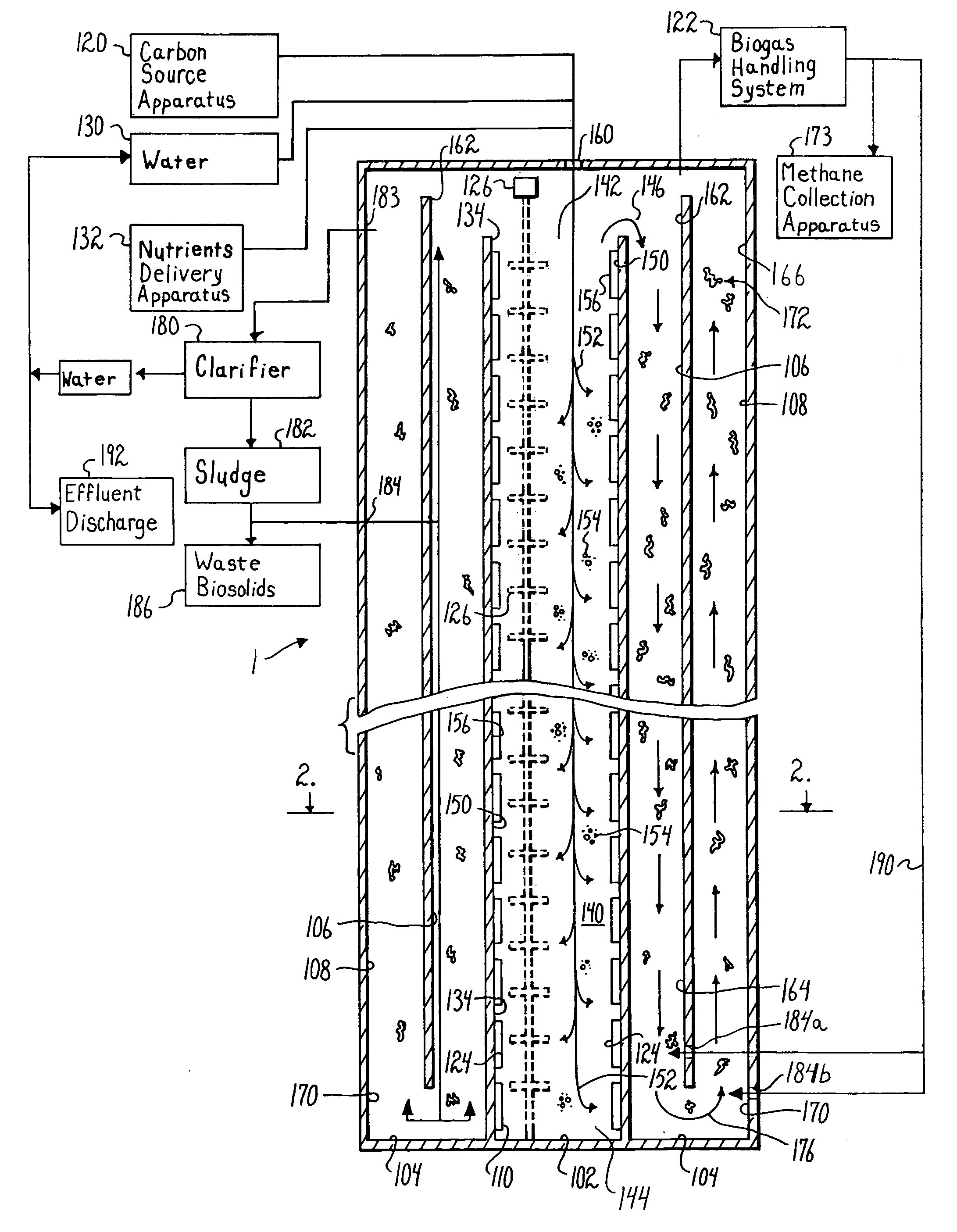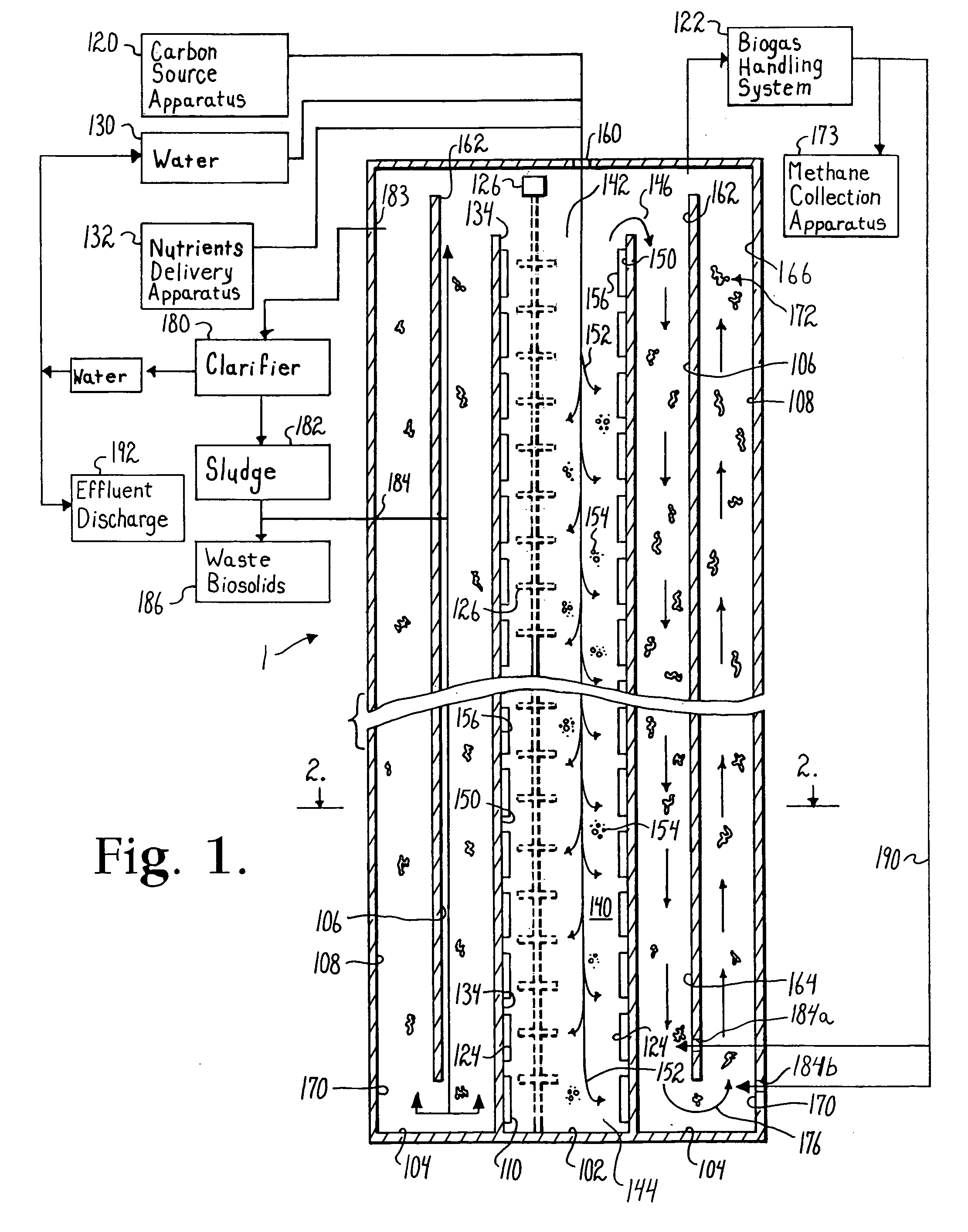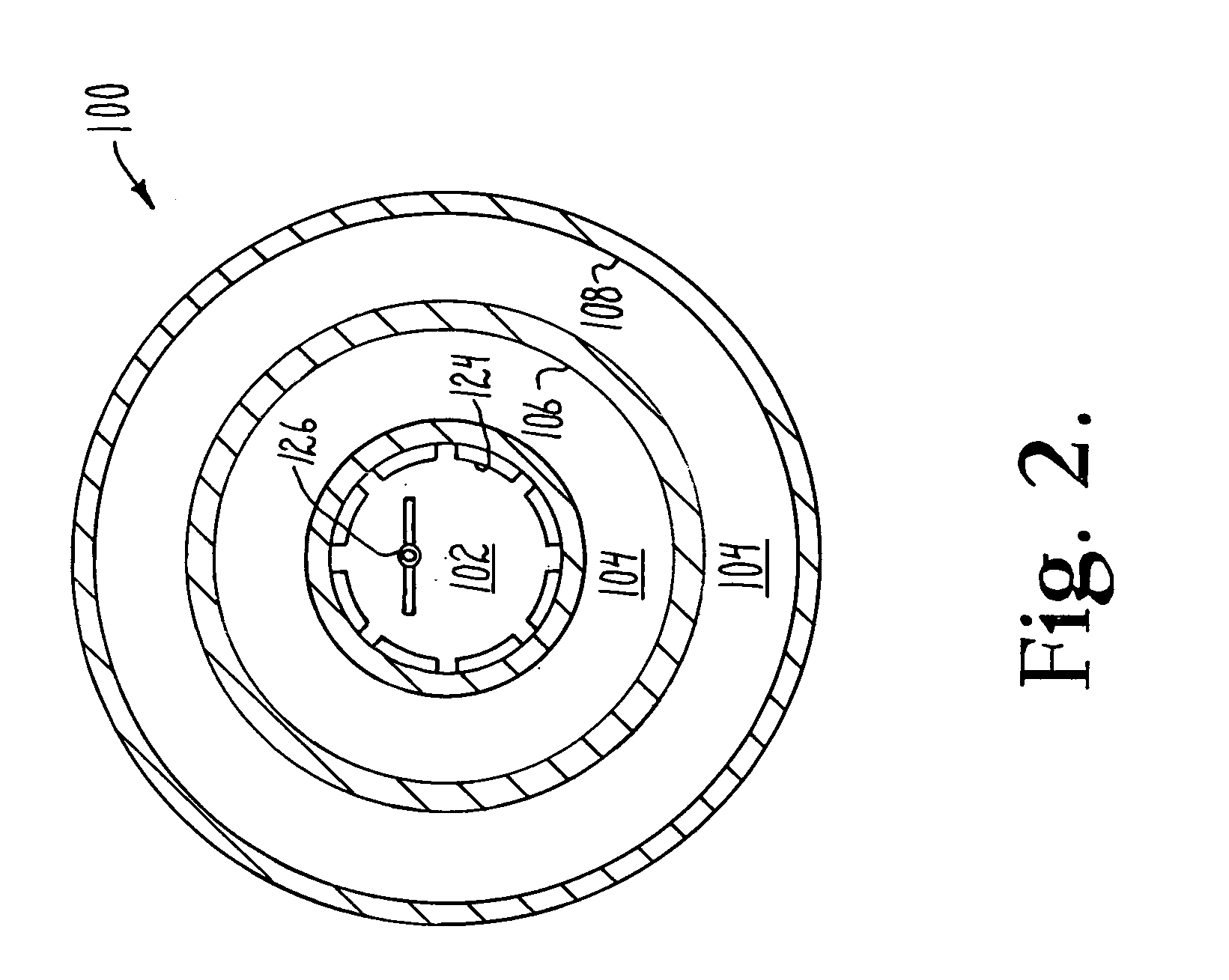Device for fuel and chemical production from biomass-sequestered carbon dioxide and method therefor
a technology of carbon dioxide and biomass, which is applied in the field of devices for fuel and chemical production from biomass-sequestered carbon dioxide and methods therefor, and achieves the effects of increasing the solubility of co2, increasing temperature and pressure, and maximizing the removal of co2
- Summary
- Abstract
- Description
- Claims
- Application Information
AI Technical Summary
Benefits of technology
Problems solved by technology
Method used
Image
Examples
example 1
[0094]An exemplary device 1 has a depth of about 500 ft into the ground and includes an inner reactor, such as the carbon-sequestering biomass incubator 102, with a diameter of about 8 ft surrounded by an outer reactor, such as the anaerobic digester 104, with a diameter of about 15 ft. The inner reactor contains algae with a concentration of about 5,000 mg / L of incubation liquid or medium. The algae grows at a rate of 2.3 per day. The carbon content of the dry weight is about 50%. The inlet gas, such as into the inner reactor, includes a CO2 content of about 15%. The CO2 transfer efficiency, such as into the liquid, is about 70%. Of the CO2 transferred into the liquid, the biomass takes up about 70% from the liquid.
[0095]A number of materials are generated from the biomass in the inner reactor. From an amount of generated biomass, approximately 59% of the fuel and chemicals produced is proteins (dry weight), approximately 19% is fats and oils (dry weight), approximately 13% is carb...
example 2
[0097]An exemplary device 1, similar to that described in Example 1, above, includes a carbon-sequestering biomass incubator 102 with a volume of 63,250 ft3 or 473,110 gal. The incubator 102 supports a biomass inventory of about 19,681 lbs and can produce about 45,267 lb of biomass per day. The produced biomass has a carbon content of about 22,634 lb / day. About 82,990 lb of CO2 is absorbed by the biomass per day. About 118,557 lb of CO2 is transferred into solution per day. The mass of the CO2 in the inlet gas is about 169,367 lb per day, such as 1,411,391 ft3 per day. Accordingly, the inlet gas volume is about 980 scfm.
[0098]The biomass generated undergoes physical-chemical treatment 200, such as heating, acid and / or alkali treatment, maceration, enzymatic degradation, solvent extraction with chemicals or critical CO2, and / or cell disruption via extreme pressure changes. Thus, about 26,708 lb (dry weight) of proteins is produced per day. Additionally, about 8,601 lb (dry weight) of...
example 3
[0100]An exemplary device 1 for production of methane from carbon dioxide is a deep-well device extending at least 500 feet into the ground. The device 1 includes a CO2-providing apparatus, a photosynthetic bioreactor or incubator 102, for growing a photosynthetic biomass, and an anaerobic digester 104, for digesting at least a portion of the photosynthetic biomass and generating methane as a digestion product. The incubator 102 is located coaxially within the anaerobic digester 104, such that the upper end of the incubator 102 is in fluid flow communication with the upper end of the anaerobic digester 104. The incubator 102 receives CO2 from a CO2 inlet, water and nutrients. A source of light, sufficient for photosynthesis, is located within the incubator 102. The incubator is inoculated with a photosynthetic biomass, which metabolizes at least a portion of the CO2, so as to produce additional photosynthetic biomass. A portion of the photosynthetic biomass overflows into the digest...
PUM
| Property | Measurement | Unit |
|---|---|---|
| diameter | aaaaa | aaaaa |
| diameter | aaaaa | aaaaa |
| diameter | aaaaa | aaaaa |
Abstract
Description
Claims
Application Information
 Login to View More
Login to View More - R&D
- Intellectual Property
- Life Sciences
- Materials
- Tech Scout
- Unparalleled Data Quality
- Higher Quality Content
- 60% Fewer Hallucinations
Browse by: Latest US Patents, China's latest patents, Technical Efficacy Thesaurus, Application Domain, Technology Topic, Popular Technical Reports.
© 2025 PatSnap. All rights reserved.Legal|Privacy policy|Modern Slavery Act Transparency Statement|Sitemap|About US| Contact US: help@patsnap.com



